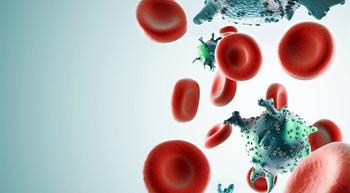
Portraits of Hope Raise Money for Metastatic Breast Cancer
Through fanciful underwater photos of people with metastatic breast cancer, the Serenity Project aims to raise awareness and funds.
AFTER KEITH DIXON LOST his wife, Serenity, to metastatic breast cancer, he regretted that he hadn’t taken more pictures to remember her by. The next best thing, the photographer decided, would be to document the experiences of others affected by the disease.
To realize his vision, Dixon partnered with Beth Fairchild, a tattoo artist with stage 4 metastatic breast cancer who has long appreciated the way visual art and images can grab people’s interest. This past spring, Fairchild oversaw the Serenity Project, which features interviews with 16 people who have metastatic breast cancer — and Dixon’s underwater photographs of them adorned with body paint.
The fanciful, dreamlike images of the patients, some holding fabric that floats dramatically around them, are part of a support and research fundraising collaboration between the advocacy group METAvivor, of which Fairchild is president, and the pharmaceutical company Eisai, Inc. The images will be featured in a 2018 calendar, and prints will be available for sale. The artwork is designed to draw attention to people who have this form of breast cancer, so that others will better understand what they are facing. In contrast with people who have breast cancer that has not metastasized, meaning that it has not spread outside the breast, those with metastatic breast cancer will die from the disease. Ironically, a patient with metastatic breast cancer may look healthier than someone undergoing chemotherapy who will very likely recover.
“My hair is down to my shoulders, and I look like a normal, healthy woman, walking around,” Fairchild said. “The fact is, I’m much sicker than an early-stage patient who is bald, who will move on after treatment. The end of my treatment is death.”
The Serenity Project is also designed to reflect the diversity of the people affected by metastatic breast cancer. Says Fairchild: “I wanted people to be able to look at the calendar and say, ‘Oh, that person is just like me.’”
Often, representatives of the breast cancer community are middle-aged white women, who make up a significant portion of the population with the disease. However, breast cancer does not discriminate. For example, one reason an Ashkenazi Jew was chosen to participate was that she represented a group in which breast cancer is more common than in the general population. The project also includes two African-American women, an Asian-American woman, a Hispanic woman, a deaf woman and a man. The patients range from young adult to elderly. By sharing these varied images, those running the project aim to clear up the misconception that only a particular type of person gets breast cancer.
GETTING AN IDEA
Dixon’s wife died in 2010, and her story inspired the project. “We wanted to be able to honor her,” Fairchild says.
Dixon’s current wife, Ren Allen, provided the final piece of the plan. A body painter, Allen lost her mother to metastatic breast cancer. Fairchild envisioned a project in which Allen’s artwork would depict aspects of patients’ cancer experiences.
At the time the project was being mapped out, Eisai was already carrying out a social media campaign called #ThisIsMBC. Its goals: to dispel misperceptions about metastatic breast cancer, provide social support for patients and help them come to terms with the disease. Fairchild, who was involved in the launch of that campaign, proposed the Serenity Project to Eisai, which partnered with METAvivor to carry it out.
Teresa Cronin, of Eisai, recalled her first reaction: “When Beth came to us with this project, we were absolutely delighted, and felt like it was a good extension of the public education campaign that we launched a year ago,” she said.
EXECUTION OF THE PROJECT
The 16 patients chosen for the Serenity Project received an all-expenses-paid trip to Jonesborough, Tennessee. There, the participants and program leaders discussed what should be expressed through the photo shoot. Fairchild asked the 15 women and one man the same set of questions; Allen sat in on the interviews and then spoke further with each participant to confirm that she understood what they wanted to communicate.
Finally, Allen began painting. It was a long process, taking anywhere from two to six hours per patient. The living works of art then went to a pool, where Dixon photographed them under water. Interview clips, as well as the photographs, are featured every month on social media, and the calendar that features a picture of each participant will be released the first weekend of October. On October 21, there will be a gallery showing of the art in New York City.
Just before the photo shoot, Fairchild agreed to participate herself. Her good friend, Champagne Joy, had been chosen for the project, but three weeks before it was launched, died from disease-related complications. “That is the harsh reality of what every single person is facing who is in this project,” Fairchild said. Considering her friend’s tattoos, long blue hair and wild Japanese makeup, Fairchild knew she could not replace her with just anyone. At the suggestion of Joy’s husband, Fairchild took her friend’s spot.
“What we did was cover my body with gold paint, so none of my tattoos were visible. Some of the images came out, and I look like an angel or a fairy. It was very whimsical,” Fairchild says.
REFLECTIONS ON THE ARTISTIC PROCESS
According to Cronin, Eisai has found that collaborating in the creation of artwork helps people rebuild a sense of self. People often feel alone and broken in the face of metastatic cancer, Fairchild agrees, and being involved in the project was empowering for participants. The images highlight their strength and determination to live the best lives they can, without downplaying the painful aspects of living with a terminal illness.
Building a legacy for people with metastatic breast cancer has always been at the heart of the project, a desire shared by everyone who participated.
“When all 16 of us pass away, die in our physical selves, these images and these stories — the way they impact other people — are going to live on far beyond death,” she said.
METAvivor specifically funds research into treatments that can help those with metastatic breast cancer, and because of sponsorship, such as that given by Eisai, all proceeds raised by METAvivor go directly toward that funding; none of it pays overhead or salaries. Therefore, the money raised from the sale of Serenity Project calendars and prints will go toward benefiting those who have or will get the disease.




